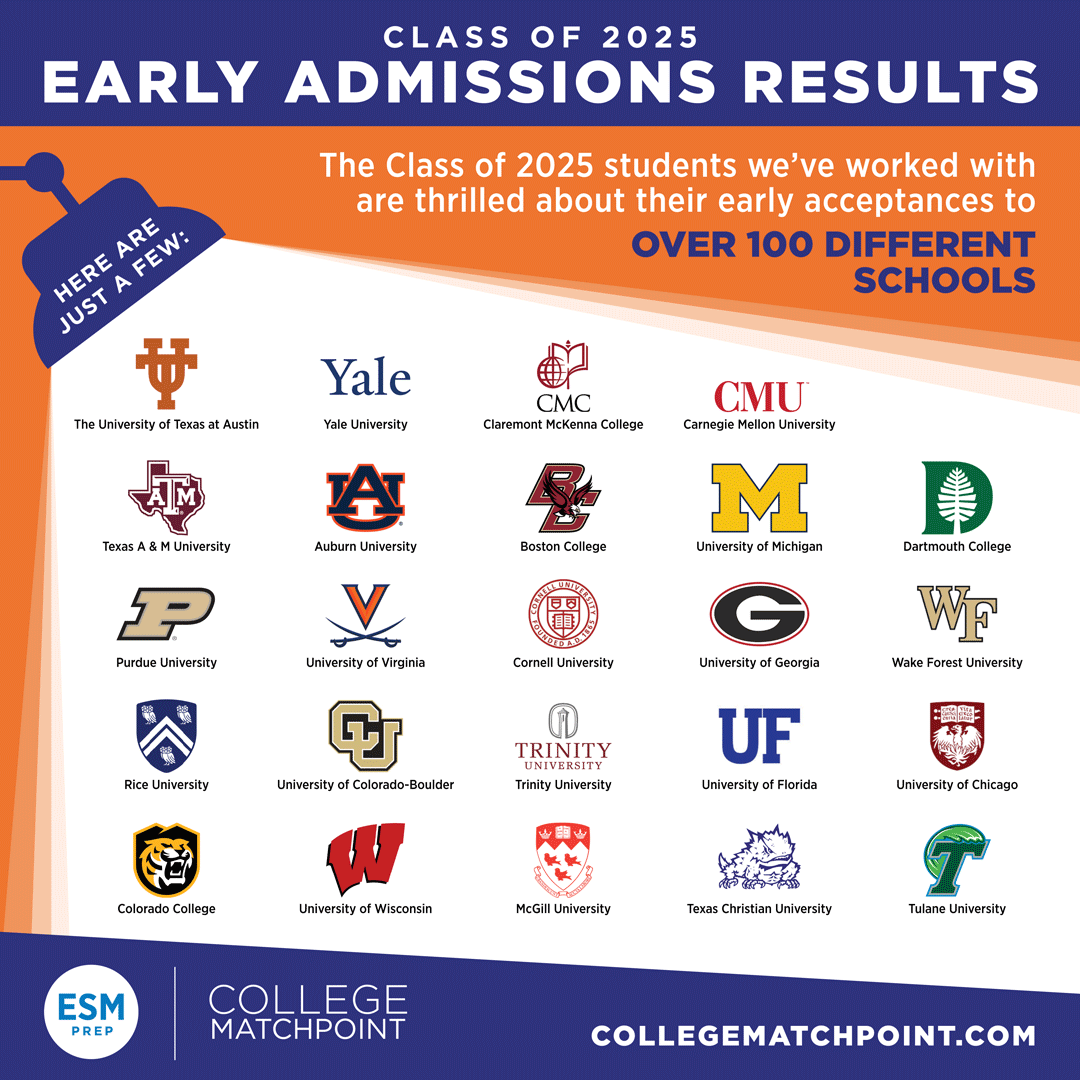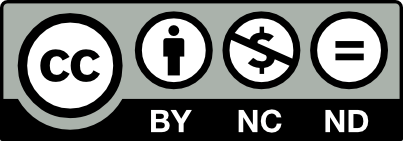This page is licensed under Creative Commons under Attribution 4.0 International. Anyone can share content from this page, with attribution and link to College MatchPoint requested.
Inside Early Admissions: How the Students We Were Lucky to Work With Stood Out in a Competitive Year
This year’s early admissions cycle reinforced a clear message: students who saw the best outcomes were strategic, demonstrated initiative, and told compelling personal stories. The students we were lucky enough to work with weren’t just strong academically—they had a well-researched college list, meaningful extracurricular experiences, and essays that reflected their authentic selves.
As competition remains intense, students applying next year should focus on rigorous academics, purposeful extracurriculars, and a thoughtful application strategy. By approaching the process with clarity and intentionality, they can maximize their chances of being overjoyed with their results—just like so many of the students we had the privilege of working with this year.

While each student’s journey was unique, some clear trends emerged in this year’s competitive early admissions cycle. What made a difference? The students we worked with who had the most exciting results combined academic strength, meaningful extracurricular involvement, and compelling personal narratives that highlighted their fit for their intended major. Here’s what we saw—and what students should consider as they prepare for future applications.
A Strategic College List Made a Big Difference
With application numbers soaring, many schools that were once considered match or safety schools have become significantly more competitive. The students who were thrilled with their early results built thoughtful, well-balanced college lists that included reach, match, and likely schools—all carefully chosen based on their strengths, interests, and financial fit.
Rather than applying to the same well-known names as everyone else, they focused on schools that were the right academic and personal fit. Many of them expanded their lists beyond the most selective schools to include excellent institutions where they could thrive both academically and socially.
What This Means for Future Applicants:
- Prioritize fit over rankings. Many outstanding colleges offer top-tier opportunities outside the Ivy League.
- Include a balanced mix of schools. A thoughtful list with true match and likely schools ensures more good options.
- Look for financial fit. Many schools outside the top 25 offer strong merit aid, making them a smart choice.
Academic Rigor—and Standardized Test Scores—Made a Big Impact
Academic performance remained the most important factor in early admissions decisions, but this year’s results confirmed that standardized test scores are back as an important differentiator. Students who were most excited about their options often had test scores in the top 75% of the admitted student range for the schools where they were accepted.
Even in test-optional environments, strong scores helped validate rigorous coursework and provided an advantage in competitive applicant pools. At the same time, students who pursued the most challenging courses available—whether AP, IB, honors, or dual enrollment—had an edge. Colleges wanted to see students pushing themselves academically, particularly in their intended field of study.
What This Means for Future Applicants:
- Strong test scores can help. If your scores place you in the top 75% of admitted students, submitting them can increase your chances.
- Maximize course rigor. Admissions officers want to see students who challenge themselves.
- Maintain strong senior-year grades. Mid-year reports can impact both early and regular decision outcomes.
Extracurriculars With Initiative and Impact Stood Out
Among the students who overperformed expectations in this year’s early cycle, one pattern was clear—initiative and impact mattered more than ever. Admissions officers valued students who didn’t just participate in activities but took leadership roles, launched projects, or made a measurable difference in their community.
For students applying to competitive majors like Business, Engineering, and Pre-Med, having a strong “fit to major” story made a significant difference. Many students who were admitted to highly selective programs had extracurricular experiences directly tied to their intended field—whether through research, internships, independent projects, or leadership in relevant student organizations. In some cases, students with compelling major-aligned experiences were admitted to schools where their GPA or test scores were below the median.
What This Means for Future Applicants:
- Focus on depth over breadth. A few high-impact activities are more valuable than a long list of passive memberships.
- Show initiative and leadership. Colleges value students who create, lead, and make an impact.
- Fit to major matters. If you can demonstrate deep engagement in activities tied to your intended field, you may outperform your academic profile.
Authentic and Compelling Essays Made the Difference
With so many academically strong applicants, essays played a key role in distinguishing who was admitted. The students who were the most excited about their early results wrote essays that felt deeply personal and reflective—showcasing their personality, values, and intellectual curiosity.
Admissions officers gravitated toward essays that offered real insight into a student’s experiences and perspective rather than those that simply listed achievements or tried too hard to impress. The best essays often focused on moments of growth, challenge, or self-discovery.
What This Means for Future Applicants:
- Be authentic. Your essay should sound like you, not a perfectly polished version of what you think colleges want to hear.
- Tell a story. The most compelling essays use vivid details and personal experiences to bring the student’s journey to life.
- Connect your story to your future. Colleges want to understand what motivates you and how you’ll contribute to their campus.
Test-Optional Didn’t Mean Test-Ignorant
While most colleges remain test-optional, many students who submitted strong test scores saw higher acceptance rates—especially at selective schools. Schools reported higher admit rates for students who submitted scores above their middle 50% range, reinforcing the idea that standardized testing remains a valuable factor in admissions.
Test scores can also play a role in securing merit aid at many institutions, making them an important consideration for families focused on affordability.
What This Means for Future Applicants:
- If your scores are strong, submit them. A high SAT or ACT score can provide an extra boost in a competitive application pool.
- If test scores are lower, emphasize other strengths. Strong coursework, essays, and extracurriculars can compensate in a test-optional application.
- Consider scholarships. Many colleges still use test scores to determine merit-based financial aid.


